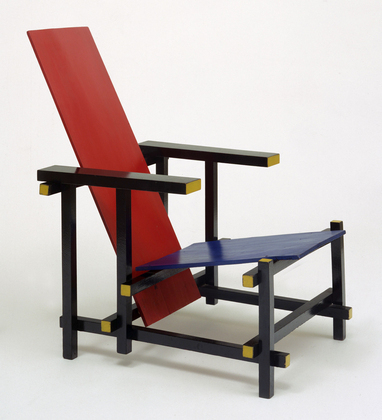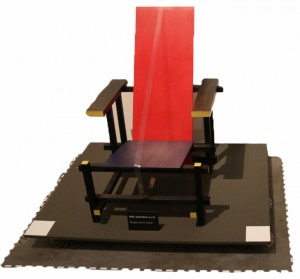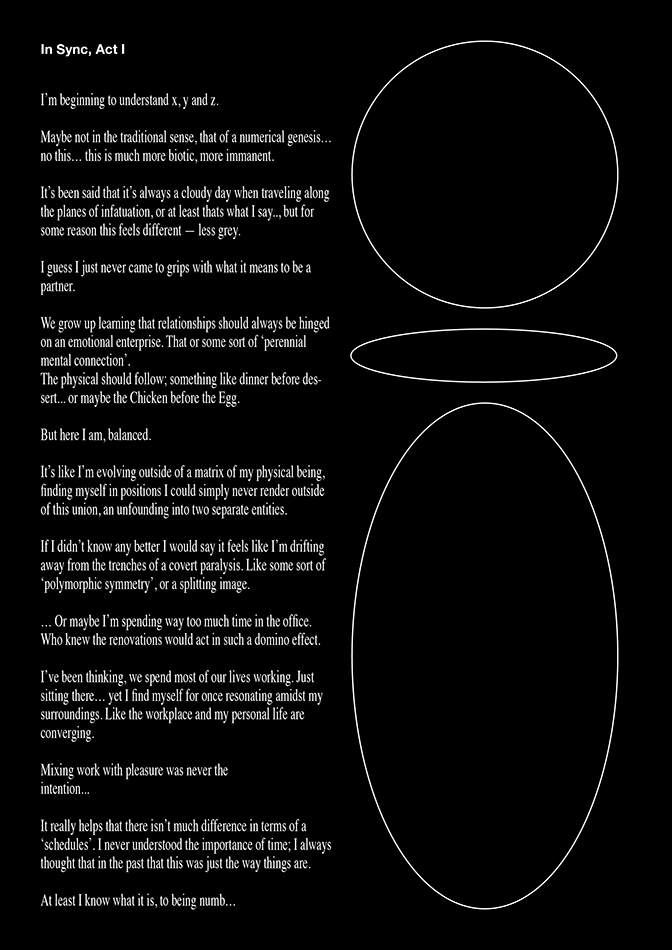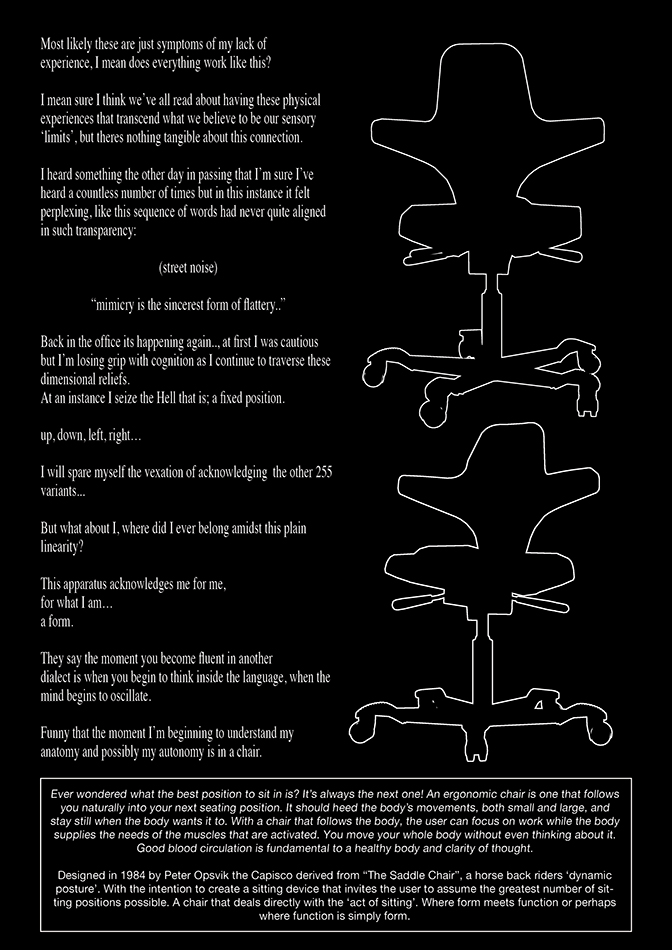First time I encountered him, it was at theory class;
The second time I encountered him, was at a museum exhibition;
The last time I encounter him, was at a teacher house.
original Rietveld Red and Blue chair 1923 from MoMa collection • chair at seen at exhibition
Bright color surface, complex structuration. I was deeply attracted to him, the Red and Blue Chair, one of the most famous chair made by Gerrit Rietveld.
Red and Blue Chair is an important example of the three-dimensional works of De Stijl. One typically relates the chair to De Stijl, or concept of design in general, rather than to utility. The unstable outward appearance and the height of the chair raise questions about its comfort.
One can imagine the importance of comfort in the design of a chair. There are well-established criteria for the ergonomic evaluation of chairs to prevent user discomfort and injury. The main ergonomic considerations for chairs in the workplace are the following: comfort, safety, adaptability, practicality, durability, and suitability for the job. Luckily, I had a chance to sit in an original (1958 Groenekan) Red and Blue Chair at my teacher’s studio. Before I conclude the chair is actually comfortable, I would like to summarize a few points from my experience sitting in it.
First of all, as an armchair, the sitting angle is relaxed. The chair has armrests at the appropriate height and of the suitable length. The most essential part of chair was the back. The back is long which gives support to the lumbar region and the shoulders. For people who aren’t too tall, they could relax their head against the back of the chair. What’s more? Since the production of materials is wood, cut boxy neither polished round. So sturdy texture reduces the comfort of the chair. However, it creates a better sitting situation, combining the chair with cushion. The chair with its logical construction could easily be made much comfortable with the help of some cushions.
The most fundamental question is adaptability: the chair’s dimensions and control features cannot meet the ergonomic characteristics of at least 60% of the potential users, due to the low seat. In fact, present standards would not define it as a suitably ergonomic chair. However, it wasn’t Rietveld’s original intention to design a chair for people to sit on for hours on end. His famous words are sitting (in Dutch “zitten”) is a verb (verb in Dutch translates into “werkwoord” a combination of the words “werk”= work and “woord” = word), meaning ; “sitting is an active pastime“.
Compared to today’s concern about ergonomics, the culture of sitting has experienced a great change from the past, according to the Australian engineer and designer Albert Linschutz in 1928.
Chair comfort level and the user’s body position are inextricably linked. This network survey shows that most is known as a comfortable chair, the way the vast majority of the user’s apply are lying down, compared to sitting, lying down, of course is more comfortable.
A Short Interview with André Klein.
Question:
What do you think of red & blue chair by Rietveld?
André:
" Hmmmm, it was never my favorites.
It seems uncomfortable but I must admitted when you sit, its not so bad. But after 20 minutes for me its maximum.
And I like Zig-Zag chair much more as a design."
The Zig-Zag Chair is another chair designed by Gerrit Rietveld from 1934. It is a minimalistic design without legs, made by four flat wooden tiles that are merged in a Z-shape using joints.
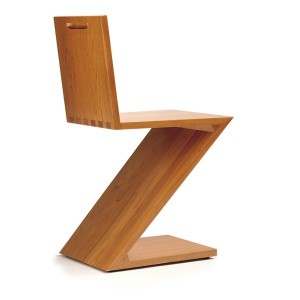
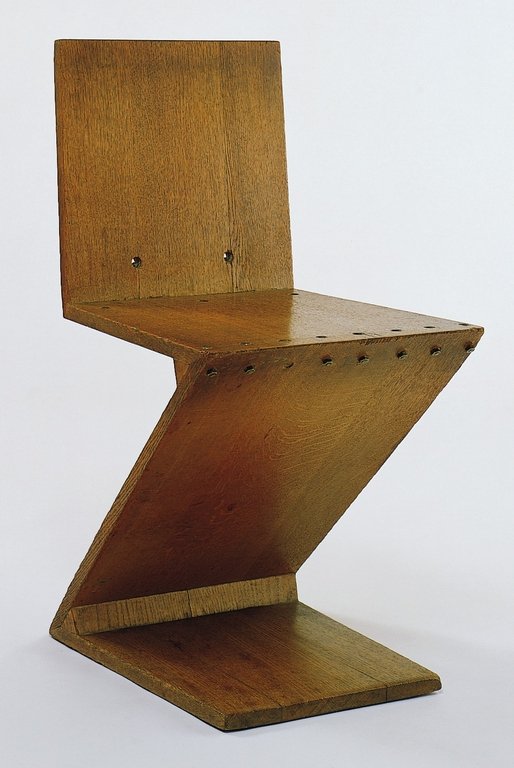
Zig-Zag chair by Cassiba • original copy 1934 from the MoMa collection
Besides the superior Z-shaped appearance, the flat seat and vertical backrest are joined by a system of dovetail joints. Coupled with the unique shape, the straight back of chair is perfectly matched with user’s back, which creates a better comfort situation. Sufficient height of the chair seat becomes much more practical and ergonomic for the user. One does not need to exert much energy or rely on an armrest to be able to stand easily, which is a feature the Red and Blue Chair cannot achieve due to its low seat. What’s more? Since school still keeping the original zigzag chairs made by Rietveld, I also got chance to sit on it. For my own perspective, the specific design angle could correct user’s sitting position and it becomes much pleasant sitting experience due to the ergonomic principle.
at school's student office
Zig-Zag Chair as a designer chair was one of Rietveld’s most economic designs. Cassina S.p.A, an Italian manufacturing company, is still producing the replicas of the Zig-Zag Chair up until this day.
The chair is in fact quite sturdy, yet comfortable. With or without the addition of cushions, the chairs have proved be very efficient and have served their owner over many years.
By comparing the two different styles of chairs made by Rietveld, the importance of user comfort within design is put into question. As design students, we must understand the concept of design within many parameters. For instance, when we design a chair, considering appearance and functionality, at the same time, we cannot avoid considering comfort. We take user’s sitting preference, or changing the material or shape as factors or direction to achieve the demanding of comfort. A good design will often require meeting several standards. I believe that this concept is applicable to all design.
Design is to change the life, so that people can enjoy and sustain life more.
